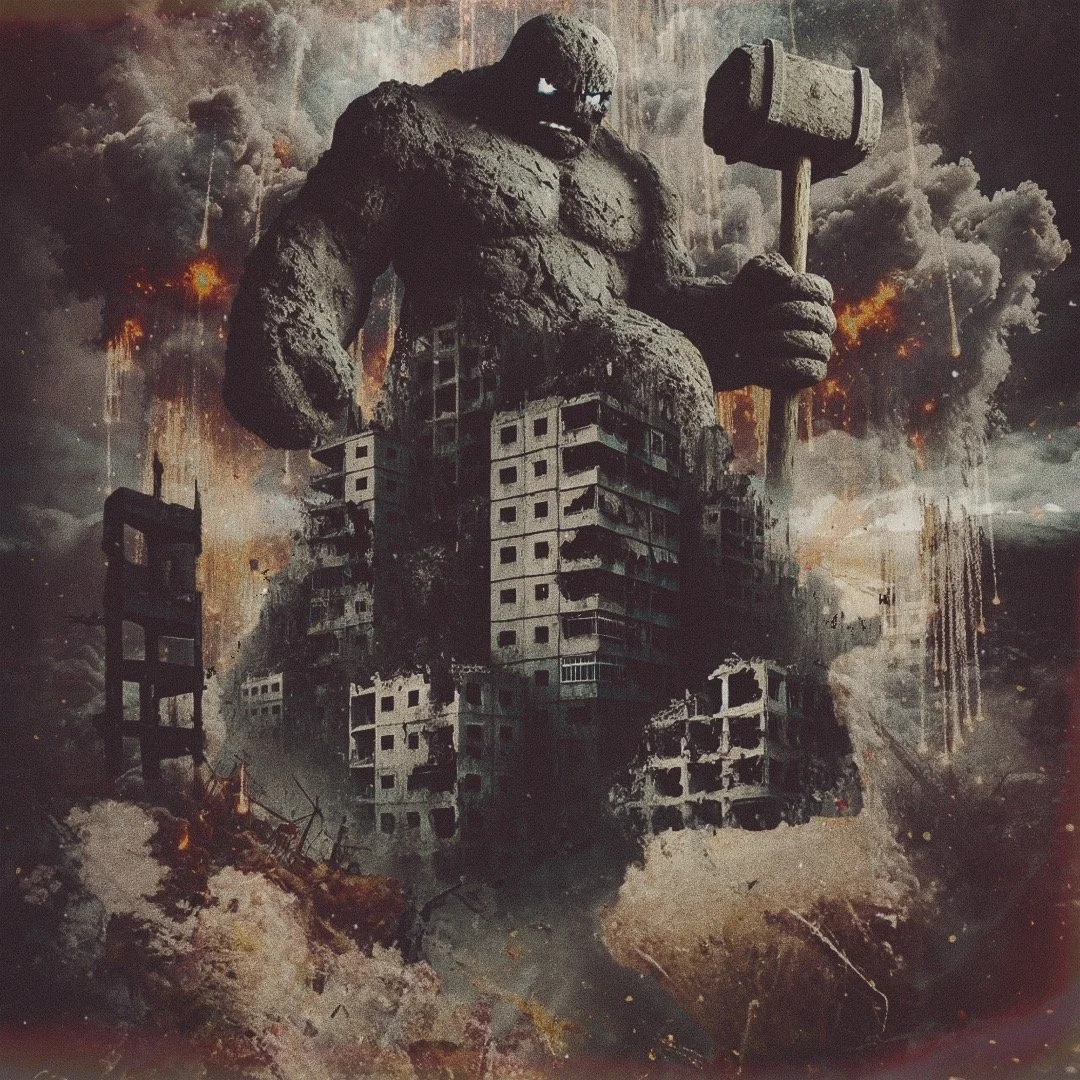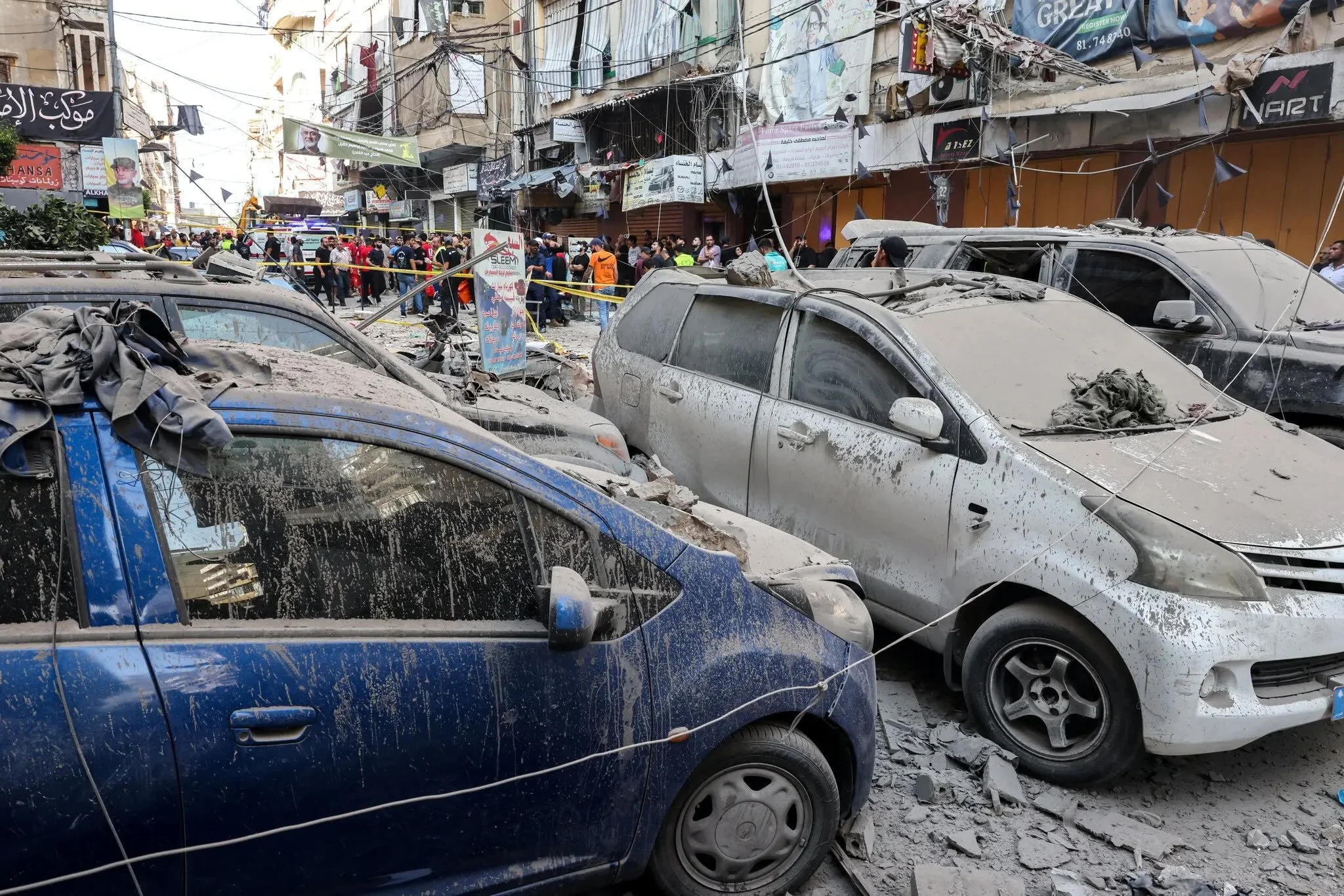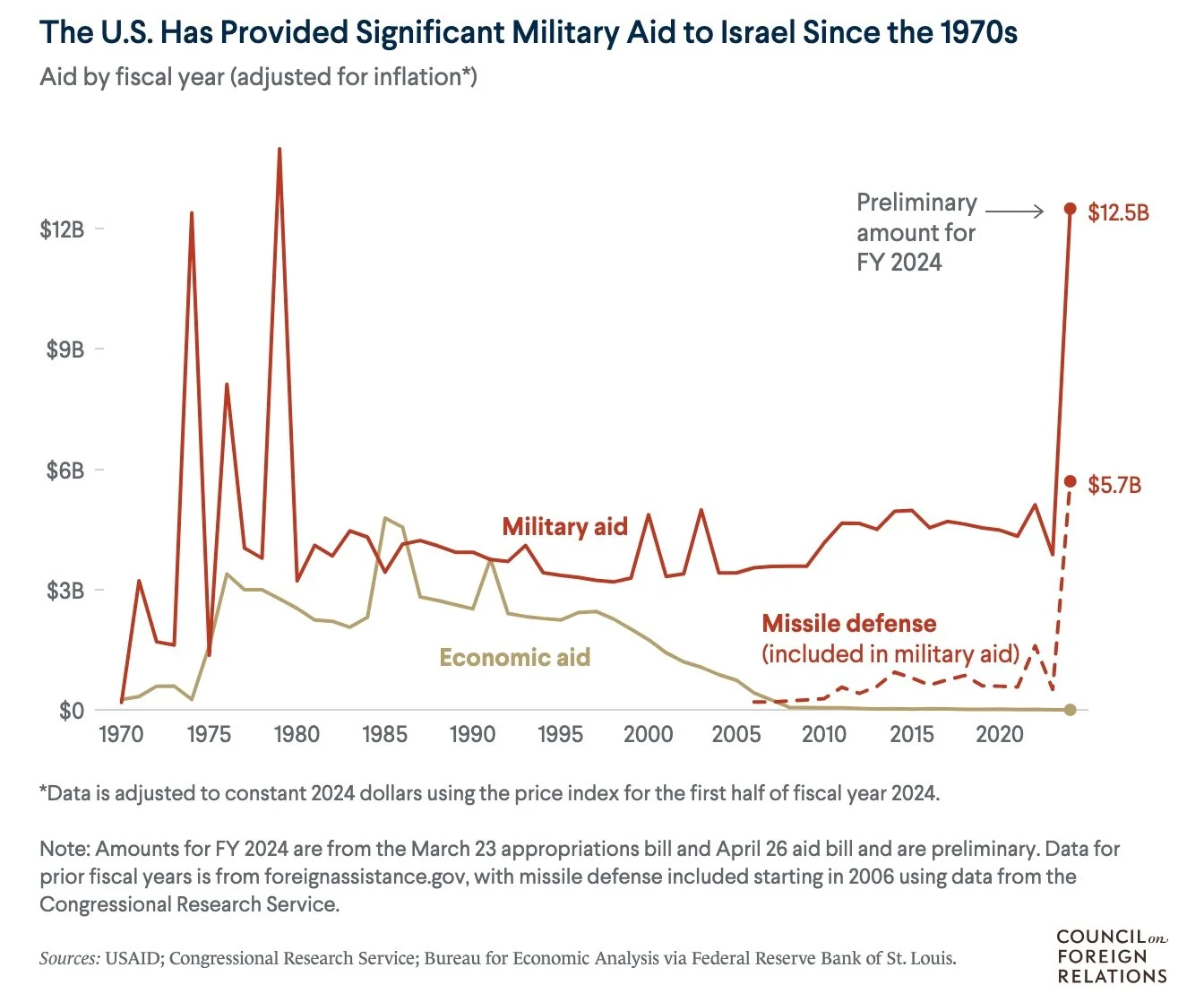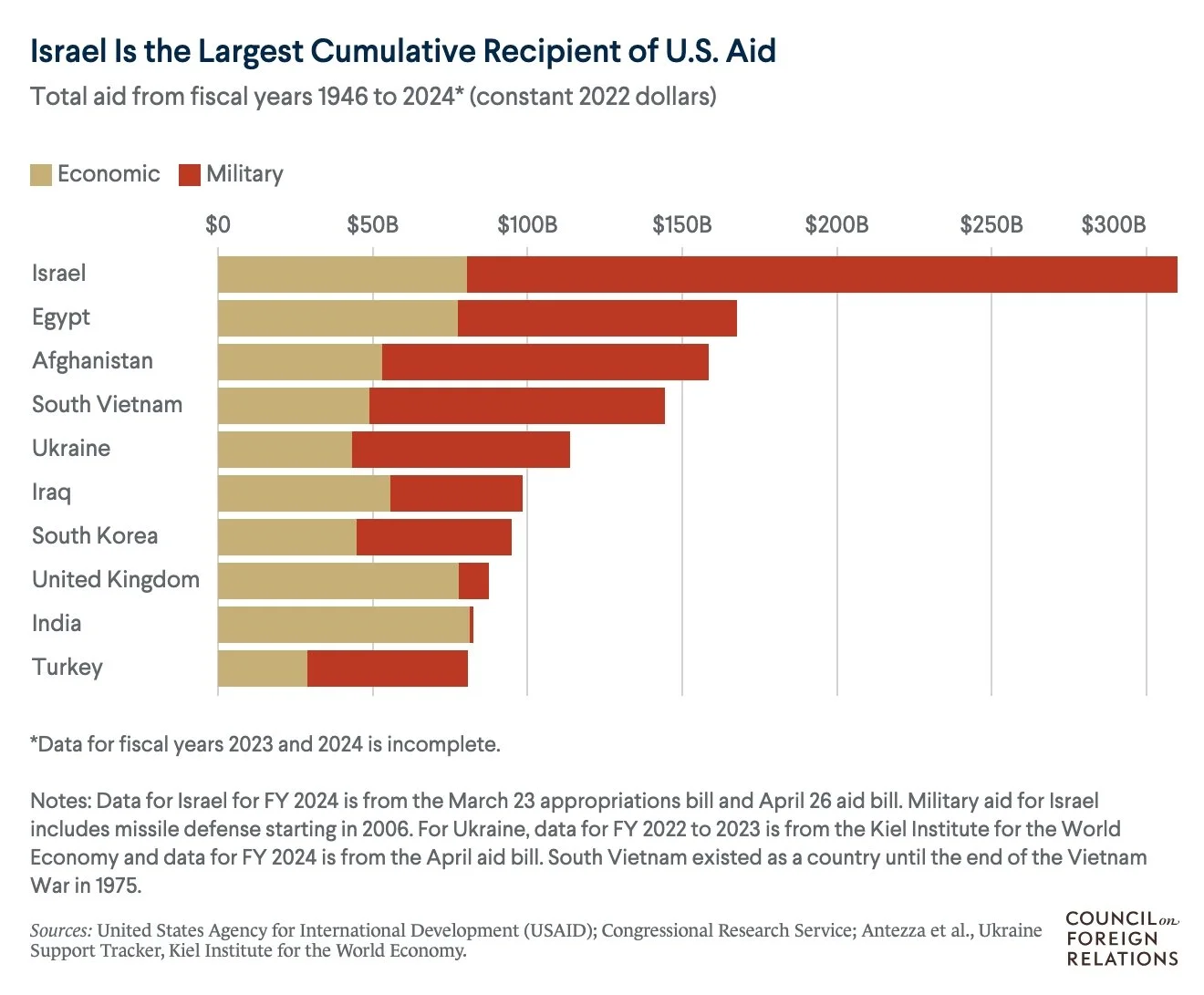Israel’s Dahiya Doctrine Makes Brutal Return to Eponymous Beirut Suburb
Israel's Operation “New Order,” a seeming nod to the Nazi ideology of the same name, reflects continued use of the Dahiya Doctrine, which consists of disproportionate attacks and maintaining illegal occupation in the Middle East.
The Dahiya Doctrine, named after the very suburb of Beirut that has once again borne the brunt of Israeli aggression, is a barbaric strategy born during Israel’s 2006 invasion of Lebanon.
That year, under the veil of attempting to dismantle Hezbollah, Israel launched widespread airstrikes on civilian infrastructure in Dahiya, resulting in the deaths of nearly 1,000 Lebanese civilians.
The doctrine was formalized by General Gadi Eisenkot in 2008, when he stated that Israel would apply “disproportionate force” to any area where resistance was mounted, prioritizing the destruction of civilian infrastructure to break morale.
"What happened in the Dahiya quarter of Beirut in 2006 will happen in every village from which Israel is fired on. We will apply disproportionate force on it and cause great damage and destruction there.
From our standpoint, these are not civilian villages, they are military bases. This is not a recommendation. This is a plan. And it has been approved." -Israeli General Gadi Eisenkot
This doctrine has since been applied in various forms across the region, most notably in Gaza, where Israeli airstrikes have indiscriminately destroyed civilian areas under the pretext of targeting Hamas militants.
The 2024 airstrike on Hezbollah’s headquarters in Dahiya is only the most recent in a series of reminders that the Dahiya Doctrine remains central to Israel’s military approach, and it demonstrates an ongoing use of disproportionate force to suppress indigenous resistance.
Lebanon and Gaza: Disproportionate Force as a Colonial Tactic
The Dahiya Doctrine was not only applied during the 2006 Lebanon War but has continued to shape Israel’s approach in Gaza as well.
During Operation Cast Lead (2008-2009), Israel targeted civilian areas, including hospitals, schools, and residential neighborhoods, under the guise of weakening Hamas.
The slaughter in Gaza has continued in 2024, with millions displaced, hundreds of thousands killed or injured by incessant bombardment.
Thousands of Palestinian civilians were killed or displaced, and Gaza’s infrastructure was left in ruins. This approach, rather than being an unfortunate consequence of war, is a deliberate military tactic aimed at terrorizing the population to weaken their resolve.
Similarly, in Israel’s September 27th Operation New Order, occupation forces targeted Hezbollah’s headquarters under the same principle of overwhelming force, destroying six apartment towers and killing civilians in the process.
Beyond the bombing of the apartment towers, Israel employed further terror by detonating explosives they had smuggled into everyday devices in Lebanese society, including pagers, two-way radios, and even baby monitors. This two-day assault resulted in the indiscriminate massacre of victims consisting of Hezbullah members and civilians alike.
Meanwhile, the invading force expanded its attacks across civilian areas, including Beirut and southern Lebanon. Airstrikes targeted residential neighborhoods, resulting in high civilian casualties.
Reports revealed widespread destruction and the deliberate targeting of key infrastructure, all ostensibly justified by claims of neutralizing Hezbollah, yet causing widespread displacement and terror among the civilian population.
These actions—explosive devices, indiscriminate airstrikes, and systematic infrastructure destruction—demonstrate a broader colonial strategy of state terror designed to suppress resistance by overwhelming indigenous populations with fear.
In the aftermath of the initial wave of terror attacks carried out by Israel, a further assassination of leaders of Popular Front for the Liberation of Palestine (PLFP), has sent a chill throughout the region.
The killing of members of PLFP, who have not had any involvement in recent aggressions between Hezbullah and Israeli Occupation Forces, sends a message that Israel can now target anyone it likes without any consequences.
The doctrine’s intention to inflict collective punishment on civilian populations further emphasizes the colonial aspect of Israel’s military strategy, where indigenous populations are systematically dehumanized and displaced.
The aftermath of "Operation New Order," another apparent application of Israel's Dahiya Doctrine in Lebanon
Operation New Order: A Historical Echo of Dark Ideologies
The name Operation New Order is as alarming as the destruction it caused. The term “New Order” was famously used by Nazi Germany during World War II to describe their vision for Europe—a vision built on racial supremacy, authoritarian control, and genocide.
By invoking this term, Israel’s military operation draws disturbing parallels between historical fascist ideologies and its current colonial project in Lebanon and Palestine.
Given the historical context of “New Order,” the troubling nature of the operation is compounded by the shadow of another holocaust.
The targeting of civilians, mass displacement, and collective punishment seen in Operation New Order bear unsettling similarities to the authoritarian strategies of domination that marked the Nazi regime.
Whether intentional or not, Israel’s adoption of this term suggests an ideological alignment with the oppression and dehumanization of those seen as obstacles to territorial control.
Copying from the Nazi Playbook
The current objective of creating buffer zones for Israel in southern Lebanon and Egypt mirrors historical strategies of territorial expansion and control, such as Hitler's plans to establish German dominance over parts of the former Yugoslavia.
Both scenarios revolve around creating strategically significant zones to exert military, political, and economic control over neighboring regions, and they involve the forceful establishment of such zones under the guise of security.
Hitler’s plan for a buffer state in the Balkans, particularly around Belgrade and Thessaloniki, aimed to secure permanent German control over the Danube basin by establishing a military foothold, resettling ethnic Germans, and reorganizing the region’s economy to favor the Third Reich.
Proposed administrative divisions like Prinz-Eugen-Gau and Reichsgau Banat were intended to embed German supremacy, ensuring long-term dominance over vital trade routes and economic resources, thereby solidifying Germany’s influence in the region.
Similarly, the proposed buffer zones in southern Lebanon and the Philadelphi corridor in Egypt seeks to establish Israeli security dominance by creating a controlled region along its northern border with Hezbollah-dominated Lebanon.
Israel’s strategic objective is to mitigate security threats and project power over an area fraught with hostile activities, much like the Nazis’ goal of controlling the Danube basin for military security and economic dominance.
In both cases, the buffer zones are seen as long-term or even permanent solutions to secure regional dominance—whether through the resettlement of innocent populations or the exertion of economic and military control over contested regions.
Hezbollah and Hamas: Resistance Born from Occupation
Israel’s repeated framing of Hezbollah and Hamas as mere terrorist organizations buys them sympathetic allyship, but it betrays the broader geopolitical reality that shaped their necessary emergence.
Hezbollah was born in the early 1980s as a direct response to Israel’s invasion and occupation of southern Lebanon. For nearly two decades, Israeli forces inflicted violence and oppression on the indigenous population, committing massacres that led to Hezbollah’s formation as a resistance movement aimed at ending the occupation.
Similarly, Hamas emerged during the First Intifada in 1987, a Palestinian uprising against Israeli occupation in the West Bank and Gaza. For Palestinians living under decades of Israeli rule, Hamas represented not just a militant organization but a form of resistance to colonial occupation and systemic apartheid.
Both Hezbollah and Hamas exist because of Israel’s policies of dispossession, displacement, and subjugation of indigenous populations. Before these groups existed, their predecessors were similarly demonized by Israel, who tend to frame anyone averse to their murderous occupation as terrorists. These rhetorical strategies have proven effective in dehumanizing the entirety of people in the region, for whom few Westerners seem to have little to no sympathy, nor any semblance of understanding of terror they endure.
Regardless of how one views the responses of these resistance groups to a genocidal oppressor, their existence reflects the desperation of populations forced to resist an occupying force that continually violates their rights and denies their humanity.
The narrative that casts these groups as solely responsible for violence in the region ignores the role that Israeli colonialism has played in shaping the conflict.
International Impunity: Israel’s Shield from Accountability
Israel’s continued reliance on strategies like the Dahiya Doctrine, most recently in Gaza, Lebanon, Yemen and Syria, is a direct consequence of the international community’s failure to hold it accountable.
Despite widespread condemnation from human rights organizations and the United Nations, Israel’s military actions have faced little more than symbolic rebuke.
This impunity is largely due to the support Israel receives from powerful allies like the United States, which has repeatedly blocked meaningful action against Israel and provided billions in military aid. This, despite the fact that the United States’ continued support of this rogue state stands in direct opposition to its own laws.
This lack of accountability enables Israel to continue its colonial policies, applying disproportionate force without fear of consequence. The international community’s inability to address the root causes of the conflict—Israel’s occupation of Palestinian and Lebanese lands—ensures that the cycle of violence will persist.
Colonialism and the Legacy of Violence
The ongoing use of the Dahiya Doctrine and the broader colonial strategy behind Operation New Order reflect Israel’s continued commitment to using military force as a tool of domination.
This legacy of violence, rooted in the erasure of indigenous populations, continues to fuel resistance movements like Hezbollah and Hamas, as these groups seek to defend their lands and lives from a murderous occupying force.
In order to fully understand Israel’s policies of expansion, dispossession, and collective punishment, they must be viewed in the context of colonialism. The destruction of civilian infrastructure, the targeting of densely populated areas, and the displacement of thousands are all part of a broader effort to maintain control over occupied territories and suppress any form of resistance.
This colonial mindset views indigenous populations as obstacles to be removed, rather than as people with a right to self-determination.
Ending the Cycle of Colonial Violence
The devastation caused by Operation New Order and the Dahiya Doctrine highlights the urgent need for a reexamination of Israel’s purported rights it believes it possesses, under which it pursues its genocidal colonial project.
The targeting of civilians under the pretense of self-defense, the deliberate destruction of infrastructure, and the invocation of terms like “New Order” suggest a deeper ideological commitment to domination and control.
Until the international community addresses the root causes of the conflict—Israel’s occupation and colonial practices—there can be no end to the cycle of violence.
True liberation can only come when the rights of indigenous populations in Lebanon and Palestine are recognized, and the colonial structure that enables their oppression is dismantled and its perpetrators expelled forever.





